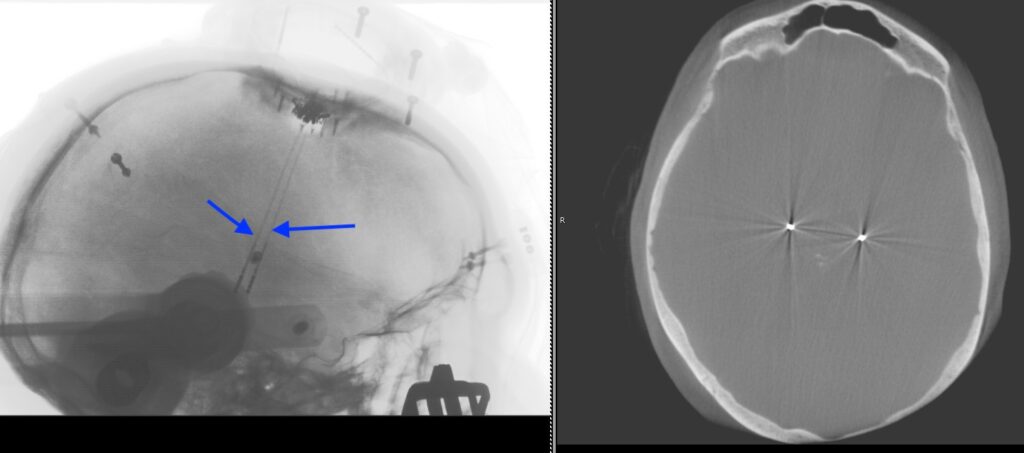Asleep DBS
- Home
- Asleep DBS
Asleep Deep Brain Stimulation (DBS)
Deep brain stimulation (DBS) is a procedure used to treat a variety of conditions; most commonly, movement disorders such as essential tremor, Parkinson’s disease, and dystonia.
DBS involves implanting an electrode – a long, thin wire – on one or both sides of the brain. The tip of the wire is placed into a small, specific area deep inside the brain. The tip emits an electrical signal that “jams” the circuit responsible for causing tremors and other symptoms. The wire is connected to a battery, which is typically implanted under the skin near the collarbone.
DBS can be life-changing for properly selected patients. Disabling symptoms such as tremor, rigidity, and muscle spasms can nearly vanish at the press of a button. The DBS settings can also be easily changed over time to produce maximum benefit.
Traditionally, DBS surgery required the patient to be awake in the operating room! The awake procedure involves passing a separate recording electrode into the brain and allows for a neurologist in the OR to test that the DBS electrode is in the correct area. As you can imagine, the idea of being awake while having brain surgery is extremely daunting.
Thankfully, technology has improved to the point where DBS surgery can be done with the patient completely asleep. More and more centers in the US are now performing asleep DBS; and there are large-scale studies with hundreds of patients which show benefits of performing the procedure with the patient asleep.
Importantly, the studies show that asleep DBS is at least as effective as awake DBS. This finding has been shown across multiple different studies at different institutions. In addition, the asleep procedure takes significantly less time in the OR; and there is a suggestion that asleep DBS is also slightly safer than awake DBS (though awake DBS done properly is also quite safe).
If you are a candidate for DBS, the choice of awake versus asleep DBS should involve a detailed conversation with your neurologist and neurosurgeon.
Referrals for DBS surgery are made by a neurologist with specialized training in movement disorders. There are several well-qualified movement-disorder neurologists in Central Texas; a list is available here.

